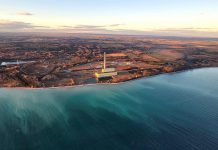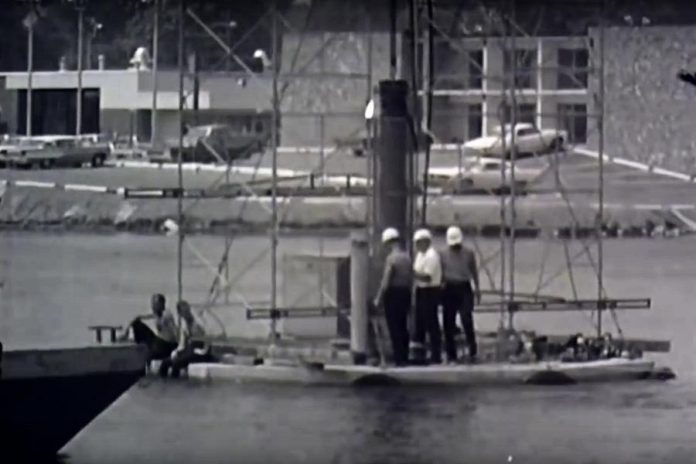
The majestic fountain in Little Lake in downtown Peterborough is a familiar sight to city residents. When it turns on every the spring, the stream of water shooting up to 75 metres in the air is a reminder that summer is on the way.
If you’ve ever wondered about the origins of the fountain, there’s an old documentary that the Greater Peterborough Chamber of Commerce recently discovered in a cupboard in their offices.The 16-mm film, called Land of the Shining Waters, documents the construction and installation of the fountain in Canada’s centennial year — 1967.
The Chamber of Commerce has converted the 20-minute black-and-white documentary to a digital format and posted it on YouTube.

The film is not only fascinating for its historical look at the origins of the Centennial Fountain, but because it’s narrated by well-known local musician and broadcaster Del Crary — after whom the park on the shores of Little Lake was named.
Crary, who died in 1978 at the age of 59, was CHEX radio’s morning announcer in the 1950s and, for 25 years, he hosted “Dance Party”, a show for teenagers on CHEX television. Named Peterborough’s Citizen of the Year in 1961, Crary was also the prime mover for many of Peterborough’s charity campaigns during the time. He created and organized The Timmy Show, an annual fundraising telethon for the Easter Seals.
Along with his friend Fred Anderson, Crary was also responsible for creating The Arts and Water Festival (now Peterborough Musicfest) which held its first event from a flatbed truck at Point St. Charles Park (renamed Del Crary Park in 1979 in his honour).
With a jazzy soundtrack (including the classic “Take Five” by Dave Brubeck), the documentary begins with a general introduction to The Kawarthas, which Crary describes as “a 70-mile section of languid lakes, busy locks, and lively interconnecting rivers.” He explains that the word “Kawartha” means “The Land of Shining Waters”, and the film continues with an explanation of why and how the fountain was created.
“Canada’s centennial celebrations sparked a worthy tribute to The Land of the Shining Waters,” Crary says. “The energetic citizens of Peterborough formed a planning committee to harness the water and build one of the world’s largest floating fountains. To create a graceful jet stream of water, 250 feet in the air, would truly be enhancing to the name Land of the Shining Waters.”
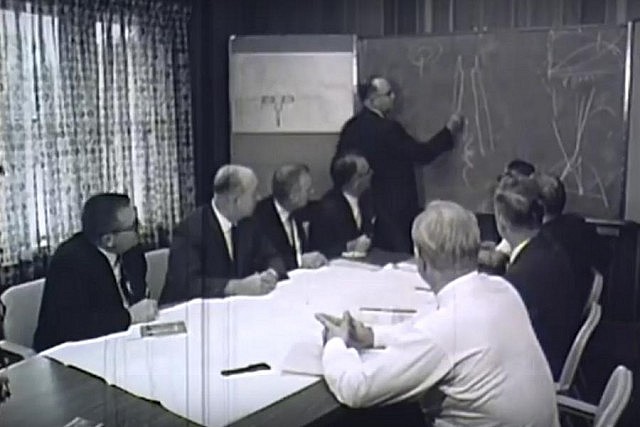


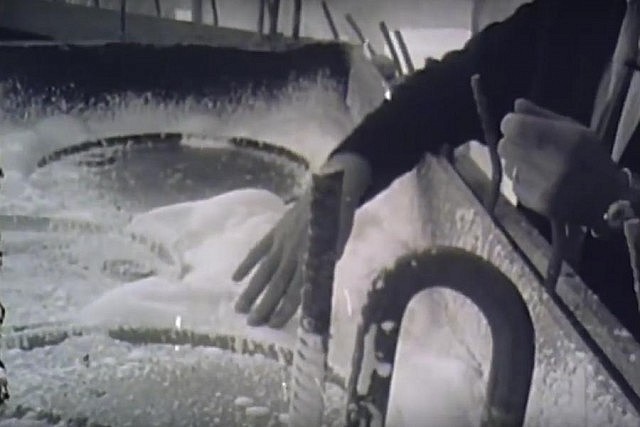

Although the fountain is now owned and maintained by the City of Peterborough, it was actually planned and built by a group of Peterborough businessmen, with local industry donating engineering skills and presumably all the materials for the fountain.
“In record time, the plans were transformed from the planning and drawing stage to 30 tonnes of concrete that was to float,” Crary explains. “The building yard was soon bustling with construction, forming and pouring a nine-sided fountain base, 23 feet wide. As a safety feature to provide permanent buoyancy, 54 steel drums and liquidized polyfoam were pumped and installed within the nonagon base.”
The core of the fountain was a 3,200-pound cannister, over 12 feet long and 15 inches in diamater, designed to pump a steady stream of water 250 feet into the air eight months of the year. At the time, this was the only pump of its kind designed in the world, featuring a water-lubricated and cooled motor with only three moving parts, and special nozzle to increase the pressure of the water leaving the pump.
After constructing the base, the organizers created three 1.5 tonne concrete anchors and, using a Trent Canal system barge and scuba divers, placed them at the intended site of the fountain in Little Lake. After the anchors were in place, the base with the pump was towed out — with a combined weight of 35 tonnes — to the location.
A large crowd watched the installation, which included an official ceremony featuring a demonstration by the Peterborough Waterski Club and live music by a youth orchestra. At the ceremony, the fountain was formally donated to the City of Peterborough. A 100-year-old man and 5-year-old girl, representing the older and younger citizens of the area, were chosen to accept the donation.

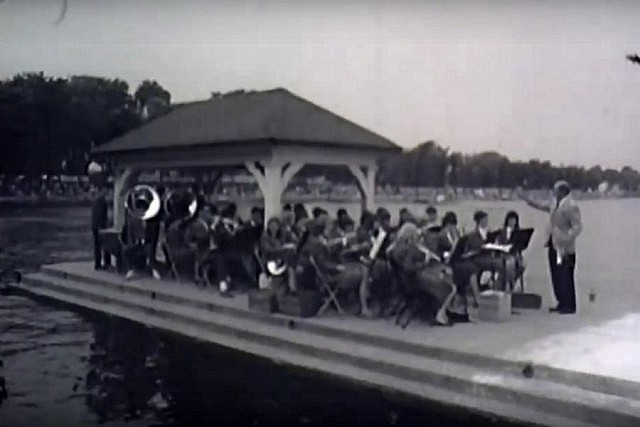



A Kawartha Photo production, the documentary was sponsored by Pleuger of Canada and produced and directed by George Swann. Sam C. Jamieson was director of photography, with the script written by Nick Nickles and narrated by Del Crary. Hal Sloan provided special effects and sound.




